Tuna Pasta Salad with Avocado Oil Mayonnaise & Hard-boiled Eggs
Looking for an easy lunch or dinner recipe? This tuna pasta salad with avocado oil mayonnaise and hard-boiled eggs is one of my childhood favorites, and now it's one of my family's go-to meals.
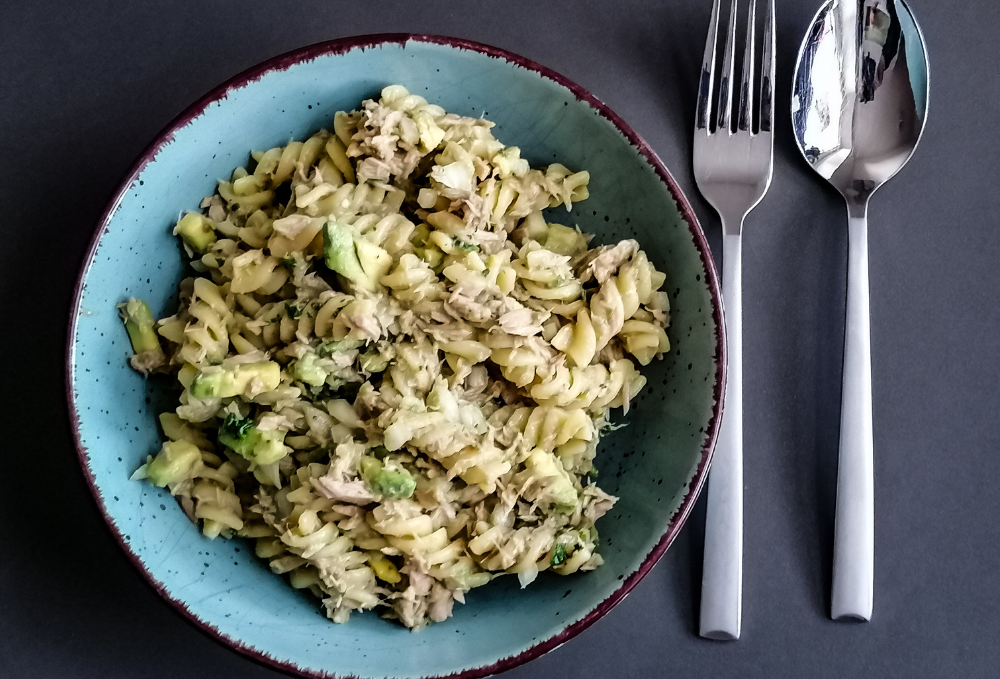
Looking for an easy lunch or dinner recipe? This tuna pasta salad with avocado oil mayonnaise and hard-boiled eggs is one of my childhood favorites, and now it's one of my family's go-to meals.
It's easy to make, travels well in a lunchbox or picnic basket, and it's extremely nutritious.
This pasta salad is so nutritious because it's packed with protein-rich wild-caught tuna and pastured eggs, and healthy fat: avocado oil mayonnaise.
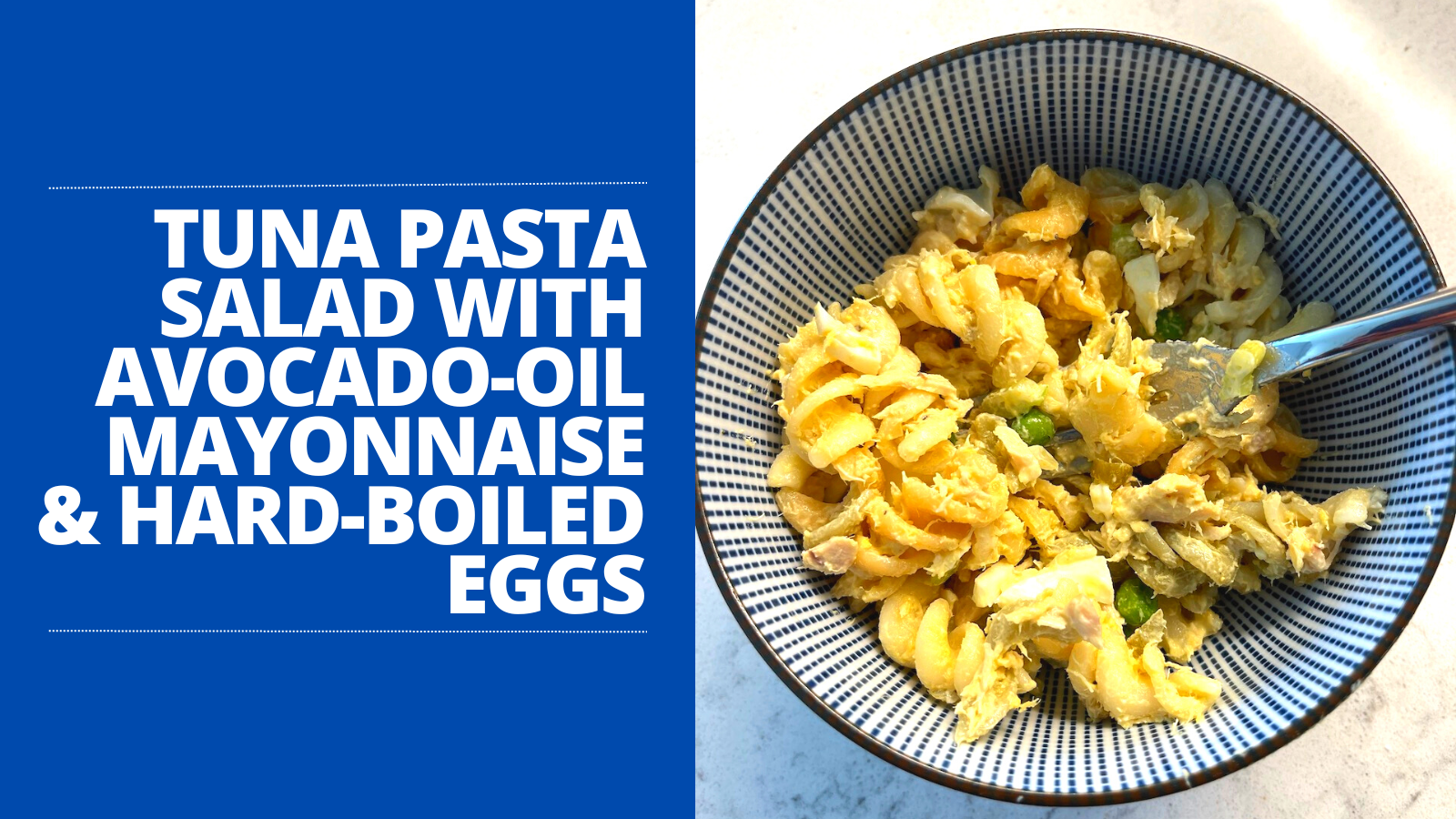
Jump down to the printable recipe below.
Why This Tuna Pasta Salad is So Nutritious
You can use regular tuna, eggs and any store-bought mayonnaise, and this recipe is still packed with nutrition.
However, if you want to increase the nutrients and healthfulness of this dish, choose avocado oil mayonnaise, wild-caught tuna, and pastured eggs.
Health Benefits of Avocado Oil Mayonnaise
Most mayonnaise brands use soybean oil or other modern factory oil which is not healthy. Even if they claim that the mayo contains olive oil, that is often not true.
Unfortunately, olive oil fraud is a huge problem. You can't trust most mayonnaise brands, even if the label claims that it contains pure extra-virgin olive oil.
This is why I usually buy avocado oil mayonnaise. Or I make my own mayo with a trusted brand of olive oil (not so easy to find these days).
Avocado oil is a great choice for mayonnaise because it has many health benefits.
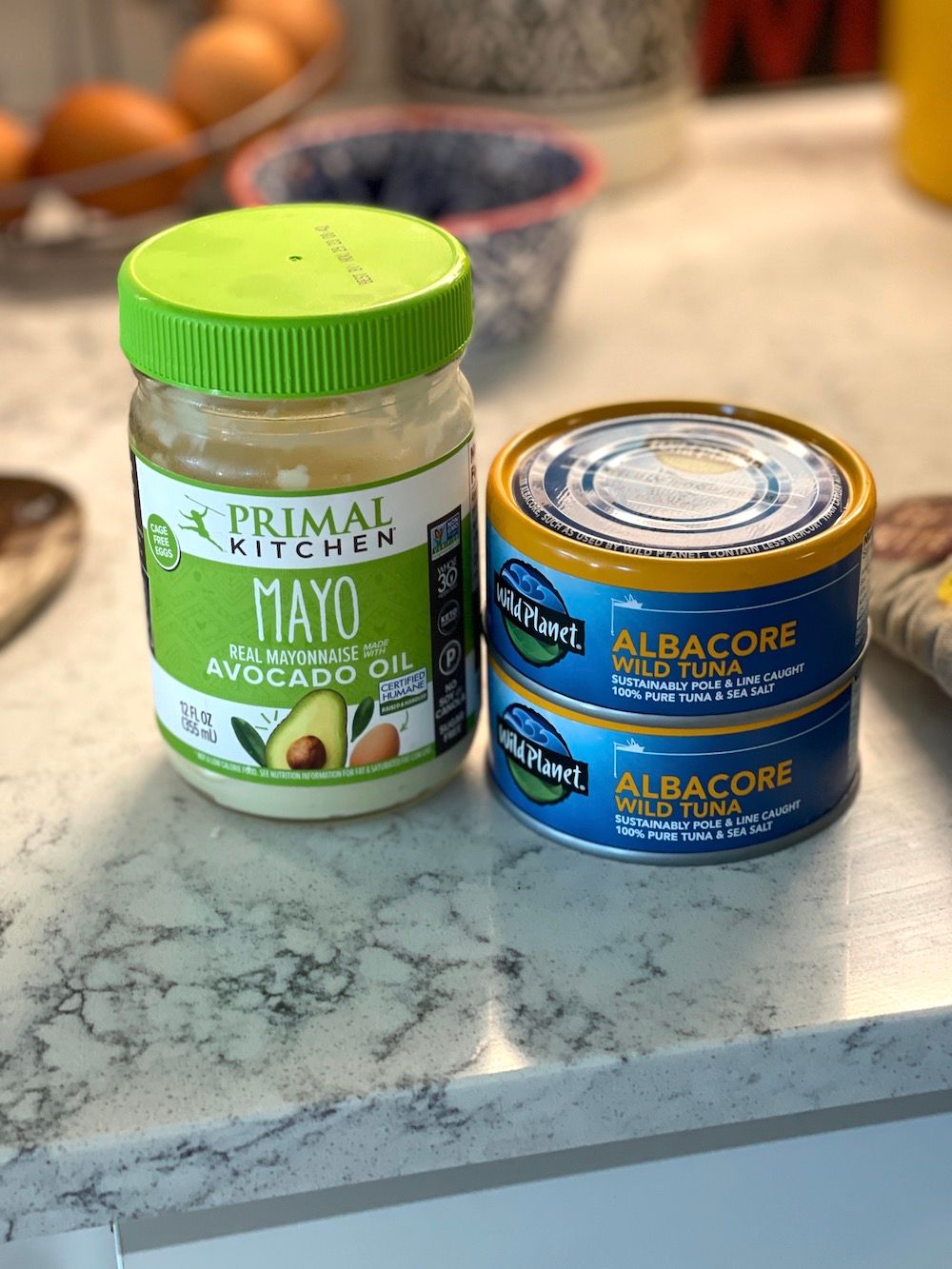
Avocado Oil is High in Oleic Acid
Avocado oil is also high in oleic acid, a monounsaturated omega-9 fatty acid found in many oils and fats. It has been linked to several potential health benefits, including improved cholesterol levels and reduced inflammation.
Studies have shown that oleic acid may help reduce bad LDL cholesterol while increasing good HDL cholesterol. This can lead to better overall heart health and reduced risk of stroke, heart attack, and other cardiovascular diseases.
Oleic acid has also been shown to reduce inflammation throughout the body. Inflammation is a normal process that enables the body to defend itself from damage and infection. However, chronic inflammation can lead to various conditions such as arthritis, asthma, and even cancer.
Eating foods that contain oleic acid may help the body fight inflammation and reduce risk of these conditions.
Avocado Oil is Rich in Antioxidants
It is rich in antioxidants, which can help protect the body from oxidative damage caused by environmental toxins and UV rays.
Avocado Oil Contains Lutein
Avocado oil also contains lutein, an antioxidant that helps protect the eyes from sun damage, and beta-carotene which can help support healthy skin.
Health Benefits of Pastured Eggs
Eggs are an excellent source of protein, vitamins, and minerals. Eggs are also an excellent source of choline, a nutrient that helps support brain function and memory.
Pastured eggs eggs are much higher in omega 3 fatty acids than regular eggs. This is because the hens that lay pastured eggs eat a diet of grasses and other nutrient-rich plants, rather than feed from a large factory farm.
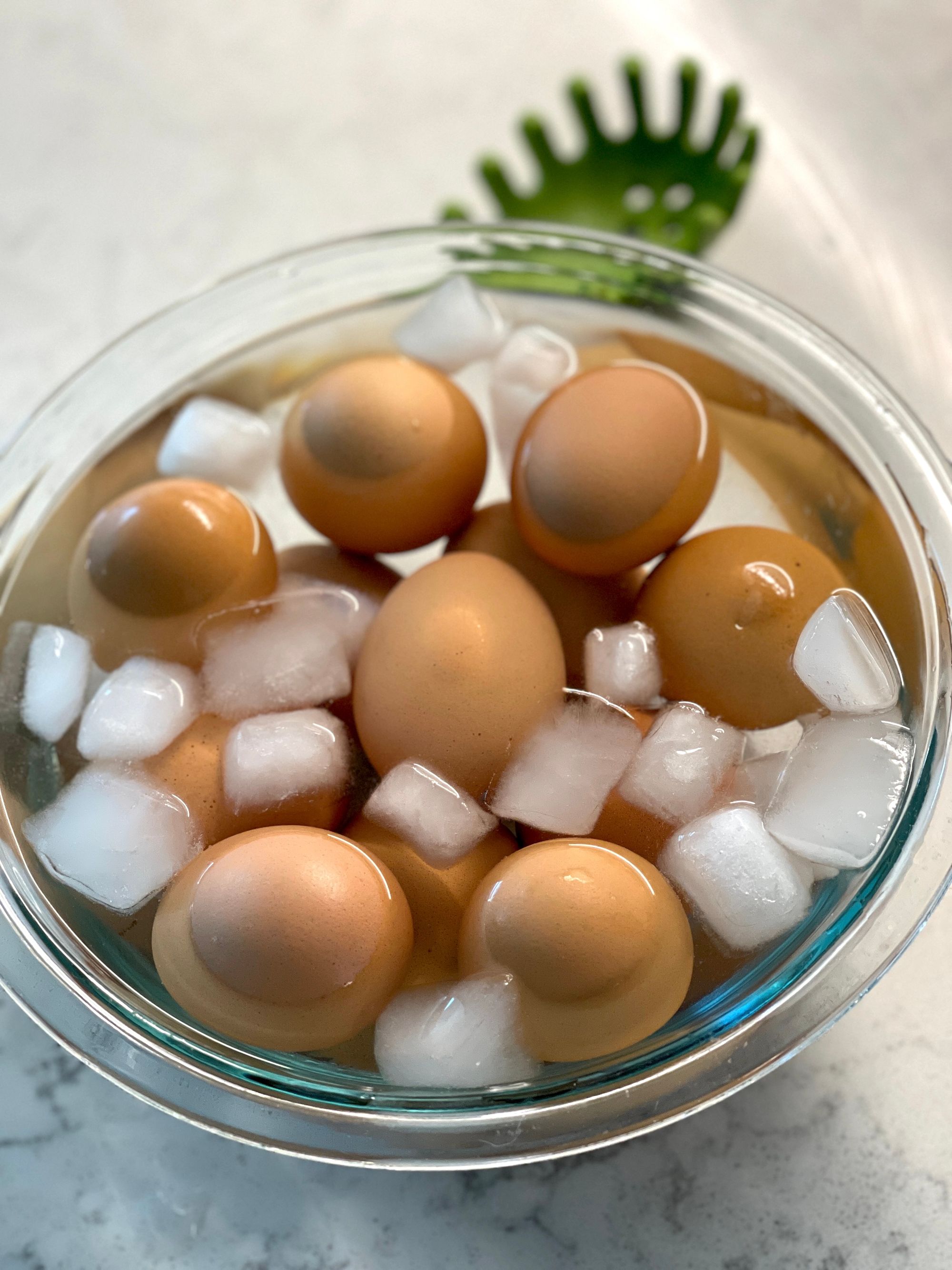
Omega-3 fatty acids have been linked to improved cardiovascular health and cognitive development. The high levels of omega-3 fatty acids found in pastured eggs can assist in reducing inflammation, improving brain function and cognitive performance, reduce the risk of cardiovascular disease, and support healthy skin and hair.
Pastured eggs also contain lutein and zeaxanthin, two important antioxidants that help protect the eyes from sun damage.
How to find pastured eggs: Look for "pastured eggs" on the label. I usually buy Vital Farms brand because I trust them. You can find them on Amazon.
If you can't find pastured eggs in your area, look for organic, or free range eggs. They are not as good as pastured eggs, but are a better choice than factory farm eggs.
Health Benefits of Wild-Caught Tuna
Wild-caught tuna is an excellent source of nutrients and minerals that our bodies need. It contains high concentrations of Omega 3 fatty acids, which are essential for a healthy heart, brain, and immune system.
Regular consumption of wild-caught tuna can help reduce the risk of stroke, heart disease, and other cardiovascular illnesses. It is also beneficial for those with high blood pressure, as it helps to lower LDL cholesterol and triglyceride levels.
Wild-caught tuna is also a great source of protein, B vitamins, iron, and other essential minerals that are important for healthy cell growth and development.
In addition to its nutritional value, wild-caught tuna is much lower in mercury than other types of fish, making it a safer choice for pregnant women and young children.
Jump down to the printable recipe below.
Recipe Substitutions
There are a number of substitutions you can make to this tuna pasta salad recipe.
- If you don't like mayonnaise or have any on hand, you could substitute full-fat Greek yogurt.
- Instead of canned wild-caught tuna, you can use cooked ahi tuna. Or you can use other types of fish, such as salmon, whitefish or canned sardines.
- If you don't have any shallots in the house, you can use a small amount of white or red onion. Just be careful to only use a little bit and taste as you add it to make sure you don't overdo it.
Jump down to the printable recipe below.
Recipe Tips
- To add some crunch and color to the salad, try adding some diced red bell pepper or celery.
- For an even heartier salad, add some cooked chickpeas or white beans.
- You could also add fresh herbs, such as parsley, basil, or chives.
- To save time on meal prep, cook the pasta and chop the vegetables in advance. Then, when you're ready to serve the salad, simply combine all of the ingredients.
- For a gluten-free version of the salad, use a gluten-free pasta.
Jump down to the printable recipe below.
Recipe FAQ
Q: What is the best way to serve the tuna pasta salad?
A: This tuna pasta salad can be used as a side dish or main course. It can be taken on picnics, in lunch boxes, and for beach days or potlucks. Because it's served cool, it travels well. It can also be served over a bed of lettuce or mixed greens.
Q: Can I use canned tuna instead of fresh?
A: Yes, you can use canned tuna in this recipe, but be sure to drain it well before adding it to the salad.
Q: Can I add other vegetables to the salad in addition to or in place of the peas?
A: Absolutely! You can add any vegetables you like, such as bell peppers, corn, cherry tomatoes, cucumber, carrots, and/or celery. Be creative and use what you have on hand.
Q: Can I use a different type of pasta?
A: Yes, you can substitute any short-cut pasta for this recipe: macaroni, penne, corkscrew pasta and shells are all great options.
Q: How long will the tuna pasta salad keep in the refrigerator?
A: The tuna pasta salad will keep for up to 3 days. Make sure to store it in an airtight container for best results.
Jump down to the printable recipe below.
Recipe: Tuna Pasta Salad with Hard-boiled Eggs
Makes 8-10 servings
Ingredients
Filtered water (5 quarts for pasta, plus extra for hard-boiled eggs)
Eggs, pastured or organic (5)
Olive oil (2 tablespoons)
Sea salt (3 tablespoons)
Pasta, macaroni, corkscrew or penne (1 lb)
Ice
Olive oil (2 tablespoons)
Avocado Oil Mayonnaise (1 cup)
Sweet pickle relish (½ cup)
Mustard (1 tablespoon)
Shallot -- or substitute a small amount of chopped white or red onion (1)
Tuna, wild-caught (3 5-ounce cans)
Frozen peas (1 cup)
Sea salt and freshly ground black pepper, to taste
Sea salt (1 pinch)
Equipment
Stock pot or Dutch oven with lid
Medium saucepan with lid
Wooden spoon
Colander
Large mixing bowl (2)
Instructions
- Add 5 quarts of filtered water to a stock pot or Dutch oven.
- Add olive oil and sea salt to pot.
- Set on high heat and cover with lid.
- In a medium saucepan, add 5 eggs and cover with filtered water at least a half inch to an inch higher than the eggs.
- Cover the medium saucepan with a lid and set on high heat to bring to a boil.
- When the water in the stock pot is boiling, add the pound of pasta, stirring to make sure it doesn't stick, and cook for 8-10 minutes or until al dente.
- When the medium saucepan with the eggs starts to boil, remove it from the heat with the lid still on set the timer for 10-12 minutes.
- When the pasta is done, drain in a colander. Let cool.
- When the timer goes off for the eggs, transfer them to a large mixing bowl with ice cubes and water.
- In a large mixing bowl, combine 1 cup mayonnaise, ½ cup sweet pickle relish, 1 tablespoon mustard.
- When the eggs are cool, peel and chop them and add to mixing bowl with mayo mixture.
- Peel and chop the shallot and add to mixing bowl. (If you don't have a shallot, you can substitute a small amount of white or red onion -- to taste.)
- Drain 3 cans of tuna and add to bowl.
- Add strained pasta to bowl.
- Add 1 cup of frozen peas to bowl.
- Stir to combine, Season with sea salt and freshly ground black pepper.
- Serve immediately or transfer to fridge and serve later. The flavors are even better the next day.
- The tuna salad can be stored in an airtight container in the refrigerator for up to 3 days.
Got Questions?
Comment below or shoot me an email at annmarie @ annmarie michaels dot com
Pin This Post: Tuna Pasta Salad with Avocado Oil Mayonnaise & Hard-boiled Eggs
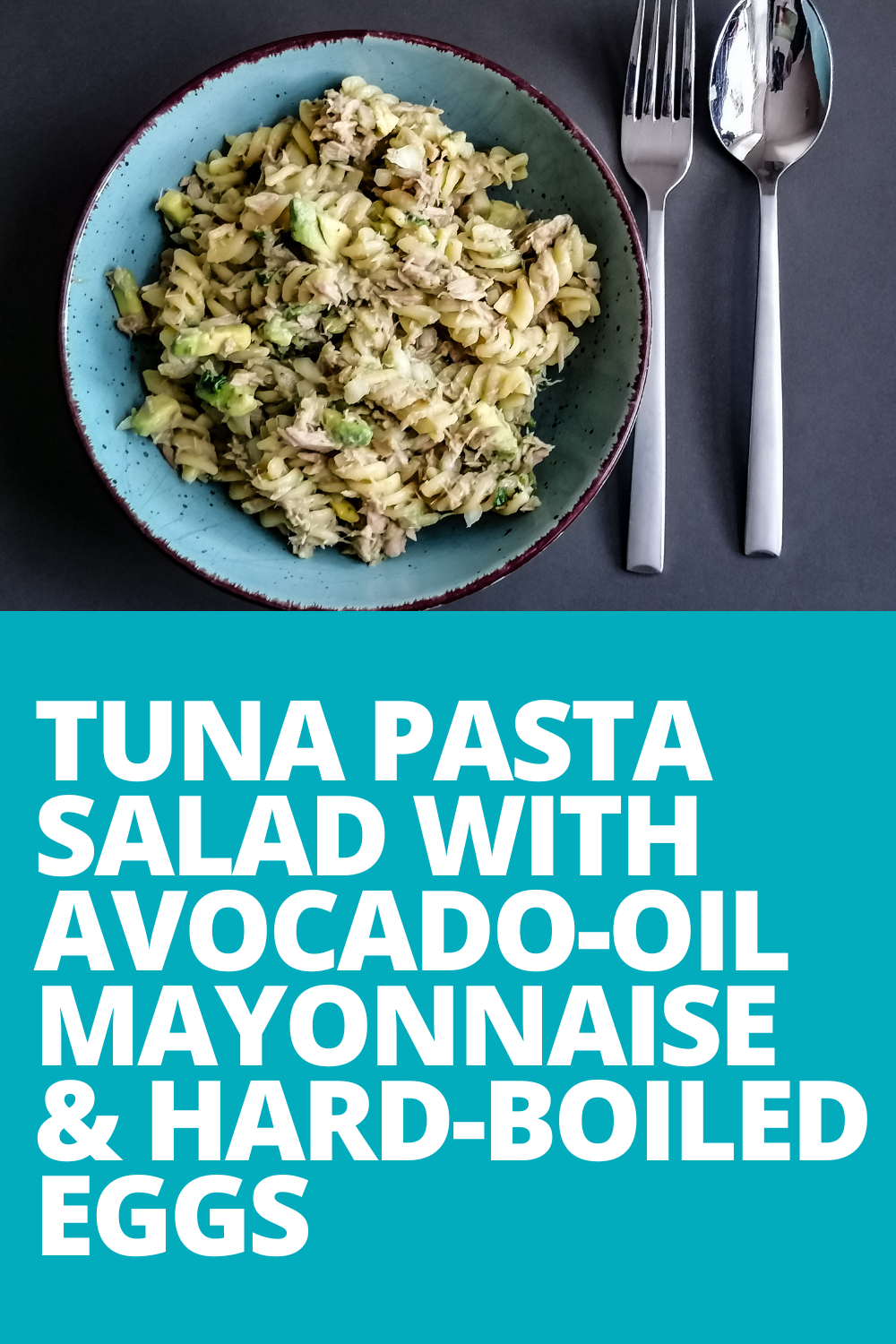

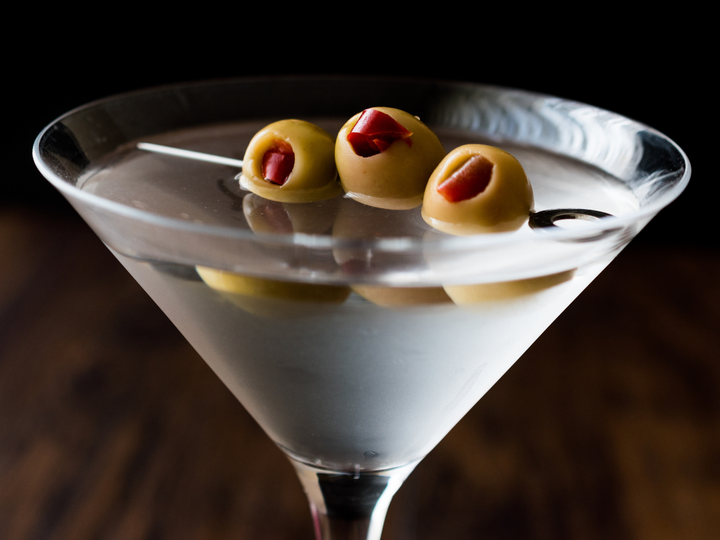
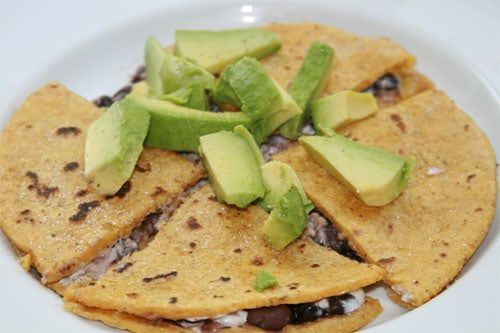
Comments ()